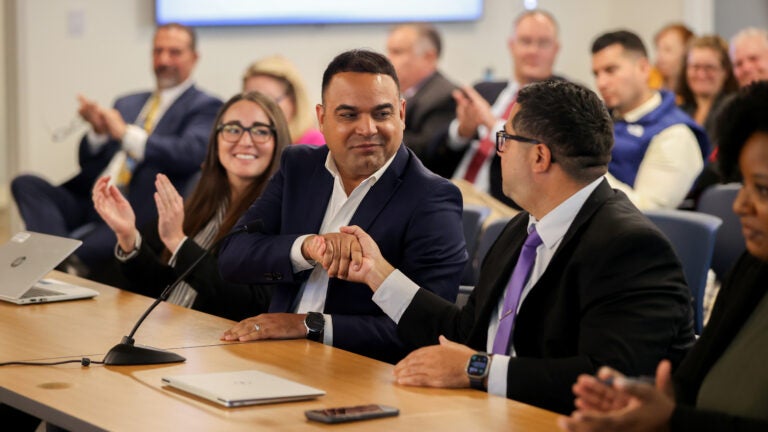Education
The district was first designated as chronically underperforming in 2015. Now, it will return to local control July 1.

Holyoke Public Schools will officially return to local control July 1 after a decade in state receivership, state officials announced, making it the first district to exit state control.
The state’s Department of Elementary and Secondary Education first announced its provisional decision to move the district out of state receivership in October. Education Secretary Patrick Tutwiler visited Holyoke Monday night to make the exit official since the district completed its capacity building plan.
“I want to honor that this is an emotional and deeply earned moment for the entire Holyoke community,” Tutwiler told the Holyoke School Committee. “For the past ten years, Holyoke families, educators, school staff, partners, and leaders have undertaken the arduous work of transforming your school system.”
Holyoke schools were placed in receivership status in 2015, as the district was chronically underperforming and not showing improvement over time. Holyoke had the lowest graduation rate in the state and one of Massachusetts’s highest dropout rates at the time. Since then, the state reported progress including an improved graduation rate, reduced out-of-school suspension rate, and expansion of pre-K.
Other improvements include expanded dual language offerings and the redesign of Holyoke High School, Tutwiler said during a Board of Elementary and Secondary Education meeting Tuesday.
When a school is placed under receivership, DESE appoints a receiver-superintendent, who has the authority that would normally be split between a superintendent and the school committee.
Anthony Soto, a Holyoke alumnus, is the current state-appointed receiver superintendent. He will remain in his role and serve as interim superintendent for the next school year after ratifying a contract last month, DESE announced.
To finalize the provisional decision, Holyoke completed its capacity building plan, which aimed to improve the district’s management of superintendent evaluation, superintendent hiring, finance and budgeting, and policy development. During the Tuesday meeting, Holyoke Mayor Joshua Garcia thanked the board.
“We both recognize that there was no blueprint for how to do this,” Garcia said. “We’ve trained up for this moment, and I feel confident that this board, under our current governance model and structure, we can hit the ground running and do the important work that we need to do for our district’s children.”
Michael Moriarty, a BESE member and former Holyoke School Committee member, said how Holyoke was able to leave state receivership should be shared with local lawmakers and education leaders. Currently, Lawrence Public Schools and Southbridge Public Schools are both designated as chronically underperforming and are in receivership, according to DESE.
“Accountability as a statewide action step is not where it needs to be right now at all, and I think the closure of this experience in the city of Holyoke is worthy of careful attention,” Moriarty said. “I hope it’s taken with the utmost seriousness, and I hope before the end of this decade, a new and better structure is in place.”
As the district leaves state control, BESE member Mary Ann Stewart emphasized concerns surrounding restoring control and trust in local governance.
“It’s something to really keep an eye on in terms of rebuilding trust and inclusion,” Stewart said. “Educator and community voices that were sidelined during the receivership process, it’s crucial that Holyoke educators and families continue to feel heard in shaping what comes next.”
Leaders of the Massachusetts Teachers Association said their union opposes state intervention in all three districts in receivership, arguing it silences educators.
“The state has an obligation to ensure that Holyoke has the resources it needs to support educators and students,” a statement from President Max Page and Vice President Deb McCarthy said. “Holyoke Public Schools have had to contend with the crushing effects of poverty in the community; that is the problem the state needs to help address.”
For up to two years, the district will continue to be monitored by the state during a transitional period, keeping track of exit assurances as part of a “Turnaround Plan,” according to DESE. The plan includes professional development for educators, the creation of an early literacy plan, communication with families, and more.
“Holyoke has worked hard to regain local control of its schools, and this is a great moment for the city, students, educators and families,” Governor Maura Healey said in a statement. “I’m confident that they will continue to successfully move the district forward.”
Sign up for the Today newsletter
Get everything you need to know to start your day, delivered right to your inbox every morning.

